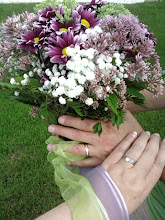Anyway . . . as I was saying, Ylia and Margarita thought of me and decided that they were not going to bring me any candy from Mexico, but something I could actually use for cooking . . . so they brought me this "salsa picante" . . .
and they also got me something called an "Alebrije".
“Alebrijes” are brightly-colored Mexican folk art sculptures of fantastical creatures, and the story about how they came to be is a very interesting one! Pedro Linares López—a papier mache artisan born in Mexico City in 1906—started out as a common “cartonero” (papier mache artist) who eked out a living in La Merced, on the outskirts of Mexico City, by making traditional piñatas, carnival masks, and Judas dolls for local fiestas. In the 1930s, he broke from tradition and started creating elaborate decorative pieces that represented imaginary creatures he called alebrijes. Inspired by a dream when he fell ill at age 30, these papier mache sculptures were painted with bright colors and intricate patterns, and frequently featured wings, horns, tails, fierce teeth, and bulgy eyes. Although Pedro Linares was the first one who used the term to describe his creations; nowadays it is also commonly used in reference to the Oaxacan woodcarvings popularized by Manuel Jimenez.
In bed and unconscious, Pedro had this dream where he was in a very strange, interesting and peaceful place, kind of like a forest, with trees, rocks and animals, and where he could also see the sky and the clouds. Pedro said that everything was quiet, he wasn’t feeling any pain at all, and he was happily walking around when, all of a sudden, the rocks, clouds and animals turned into weird creatures: a donkey with wings, a rooster with bull horns, a lion with a dog’s head. All these creatures were yelling just one word: “Alebrijes”. He said that they were yelling louder and louder and just repeating that same word “Alebrijes, Alebrijes, Alebrijes!”
Pedro claims that the noise was terrible and that he wasn't able to stay there for a long time because he got a terrible headache and left. He then found himself on this road and saw a man walking along. He asked for help—he wanted a way out! The man told Pedro that he wasn’t supposed to be there yet, that he had to keep walking and that a few steps away he would find an exit. Pedro started running and soon found a narrow window. He was barely able to escape through it and then he woke up.
Some versions tell that Pedro suddenly woke up in the middle of his own wake, and that he heard expressions of astonishment and prayers from friends and family when they saw him “coming back from what seemed his death”. After that moment, Pedro recovered completely and started remembering his dream. He wanted his family and everyone else to know about these fantastic animals. And taking advantage of his artistic ability, Pedro grabbed some paper and molded it into these figures, painted them—just like in his dream—giving life to the “Alebrijes”.
That first of Pedro’s alebrije caught the eye of a gallery owner in Cuernavaca, Mexico. The gallery soon commissioned additional pieces. Eventually, museums around the world purchased the extraordinary, one-of-a-kind alebrijes, and Pedro traveled to participate in exhibitions throughout Latin America, the United States, and Europe.
Pedro’s family says that he used to work 16 hours every day—from 7 a.m. until 11 p.m.—until the day before he died, on 26 January 1992, at age 86. His family still keeps the tradition alive.
I found a video on YouTube, "The Colors of Mexico: Alebrijes" . . . I thought you might want to watch it! :)
http://www.youtube.com/watch?v=uXn0VE66VmE&feature=related




No comments:
Post a Comment